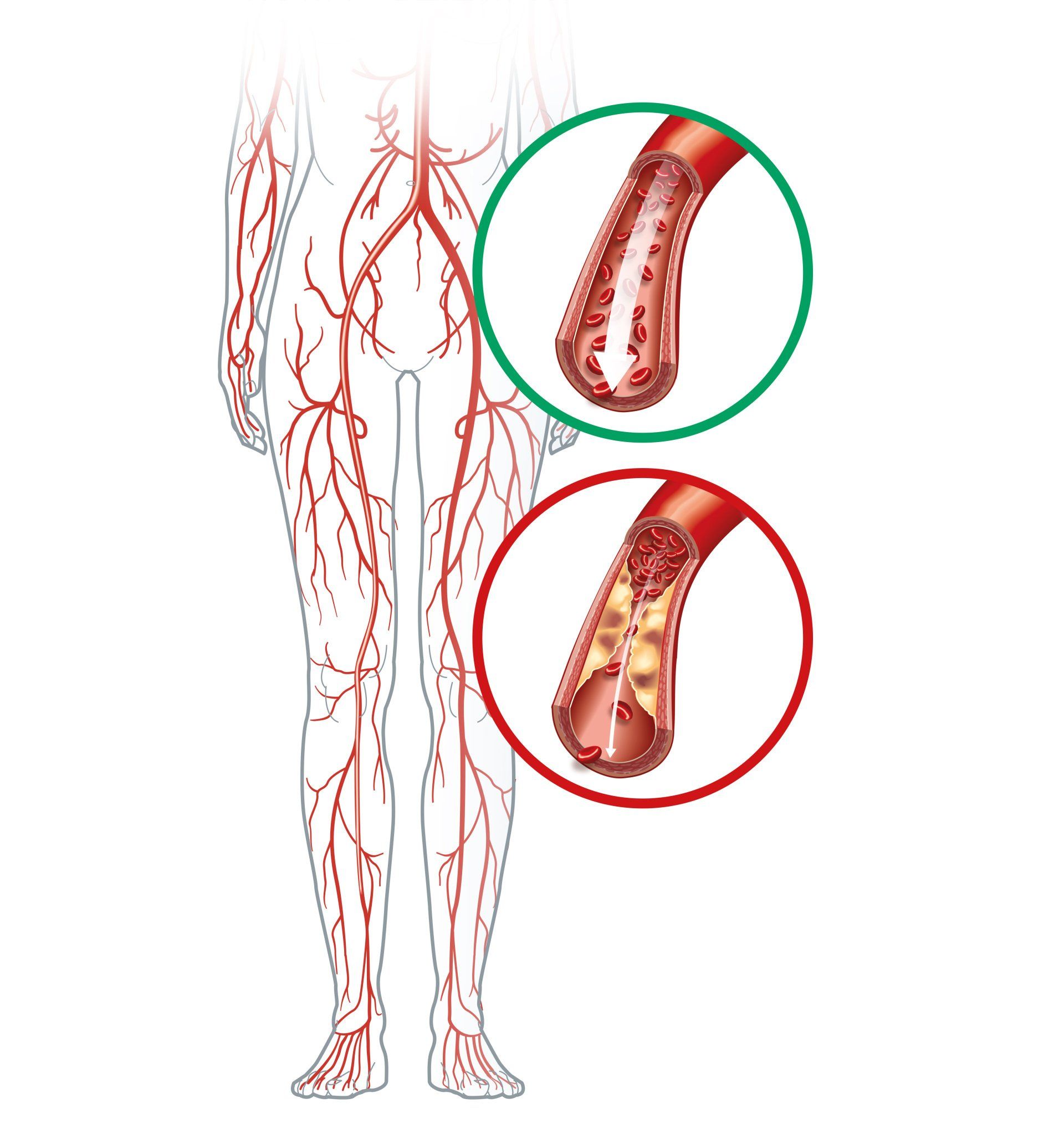Call Now: (615) 849-7490
Peripheral Artery Disease
(PAD)
Poor
Blood Flow?
Peripheral Artery Disease (PAD) is a common condition where the arteries that carry blood to the legs or arms become narrowed or blocked, often due to atherosclerosis, also known as “hardening of the arteries.” This buildup of plaque restricts blood flow, leading to pain or, in severe cases, limb amputation if left untreated. Risk factors like high cholesterol, high blood pressure, smoking, and diabetes can further damage blood vessels, making them prone to plaque deposits. Even without symptoms, PAD can cause significant health issues. Seek medical advice if you suspect PAD to ensure proper diagnosis and treatment.
What To Expect
Signs & Symptoms
- Leg pain during walking or exercise (claudication)
- Numbness or weakness in the legs
- Coldness in the lower leg or foot
- Sores on the toes, feet, or legs that won't heal
- A change in the color of the legs
- Hair loss or slower hair growth on the feet and legs
- Shiny skin on the legs
- Weak or absent pulse in the legs or feet
Initial Consultation
During your initial consultation for Peripheral Arterial Disease (PAD), our dedicated team will thoroughly review your medical history and discuss your symptoms. We will conduct a comprehensive physical examination and may recommend diagnostic tests to assess the severity of your condition. This consultation is an essential first step in developing a personalized treatment plan aimed at improving your circulation and overall quality of life.
Treatment Plan
An arteriogram is a key diagnostic and treatment tool for PAD. This minimally invasive procedure is done in office using imaging to visualize the arteries and identify blockages. During the procedure, a contrast dye is injected into the arteries, and X-ray images are taken to pinpoint areas of narrowing or blockage. Based on the findings, treatment options such as angioplasty, stenting, or atherectomy can be planned to restore proper blood flow and alleviate symptoms.
Post Treatment
Patients can go home 4 hours after the procedure. Patients may experience some bruising or soreness at the catheter insertion site. Rest and avoid strenuous activities for a few days to aid healing. Keep the insertion site clean and dry, and monitor for any signs of infection, such as redness or swelling. A nurse will call the next day to check in. Initial follow-up visit is scheduled 2-4 weeks, 1-3 months, and 6-12months after your procedure.
Discover What MVI Can Do For You
Schedule a consultation with the vascular experts at Murfreesboro Vascular & Interventional, and see how our treatment options can help you live pain-free.
Book an Appointment NowPhone: (615) 849-7490
Fax: (615) 890-7838
All Rights Reserved | Murfreesboro Vascular & Interventional
Careers | Privacy Policy | Site by Infinity Medical Marketing



